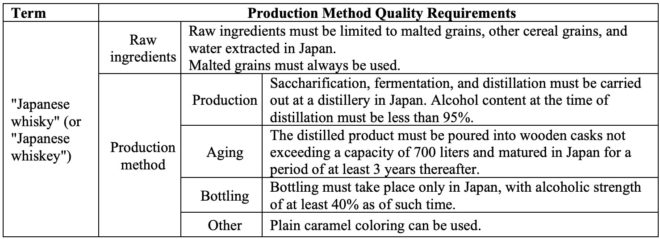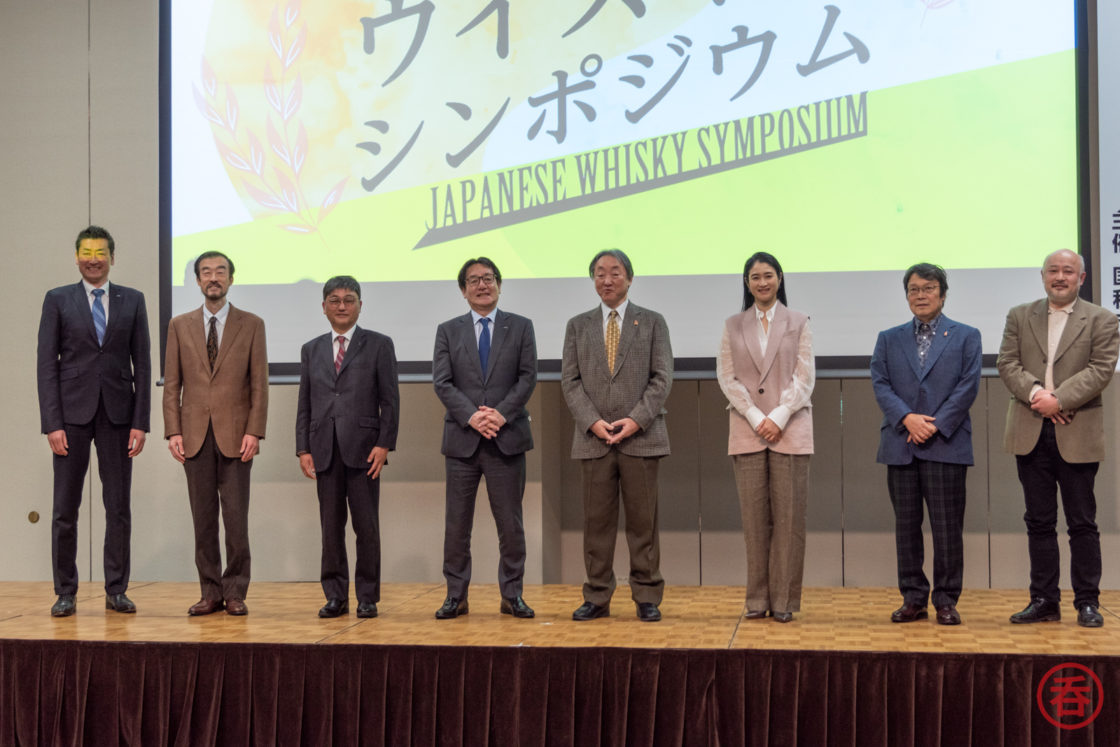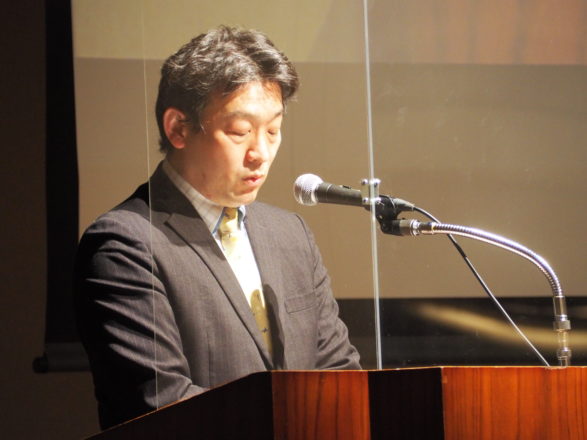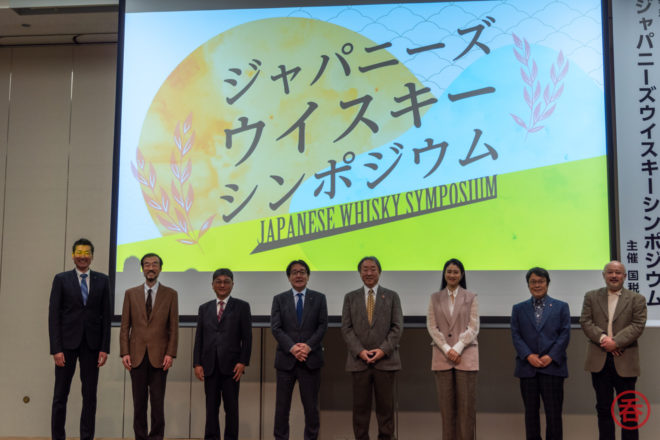On March 15, 2022, Japan’s National Tax Agency held the first-ever Japanese Whisky Symposium. It’s one of the first times the taxman in Japan has expressed an interest in talking about what “Japanese whisky” really is or isn’t. It’s an important step.
Japanese whisky still has no legal definition anywhere, even in its home country. Despite this, the category is currently enjoying massive growth inside and outside Japan. That growth presents a significant financial opportunity. Several bad actors have taken advantage of Japanese whisky’s lack of legal protection, importing whisk(e)y from other countries and passing it off as Japanese. While there’s nothing wrong with blending whiskies from across the world, labeling those products as “Japanese whisky” is misleading.
Looking to address these issues, on April 1, 2021, the industry trade body–the Japan Spirits & Liqueurs Makers Association, or JSLMA below–implemented standards for Japanese whisky. The standard requires bottles labeled as “Japanese whisk(e)y” to fulfill the below requirements:

That was a decent first step, but as I said at the time, self-enforced industry rules a) don’t have legal teeth and b) don’t apply to companies who aren’t members of the Association. Eventually, we’ll need something more all-encompassing.
With Japanese whisky now the country’s most valuable liquor export–worth more than even sake–I’ve been saying that the National Tax Agency needs to see the bigger picture for quite some time. If they support the growth of Japanese whisky, they’ll support the growth of an essential source of tax income.
While it might not mean we’ll see tax code changes soon, at the very least, this Symposium is a sign that they’ve been paying attention. And to be clear, it was a symposium — there were no booths, bottles, promotional seminars, or tastings.
Japanese Whisky Symposium
The day began with a brief greeting from Osamu Go. Go-san runs the Liquor Tax Division at the National Tax Agency.
We quickly moved over to an outline of the JSLMA regulations provided by Tomoo Arai, Managing Director of the JSLMA. We discussed the rules in detail when they were announced, and we had a look at the potential shortcomings. While there wasn’t any new, previously unrevealed information for regular readers of this site, he highlighted Clause 3, Article 6 of the standard. It says:
Business operators shall not use labeling that makes it likely that alcohol products that do not meet the definition of “whisky” under the Liquor Tax Act are mistaken for whisky, and shall not supply, or cooperate in supplying, alcohol products to vendors that use such labeling.
http://yoshu.or.jp/statistics_legal/legal/pdf/independence_07.pdf
This particular line of the standard didn’t stick out to me back when it was announced. It’s throwing a middle finger at anyone who may want to label their koji-only spirits (i.e., using no malt) as whisky. Pay very close attention to the wording. They say “whisky,” not “Japanese whisky” there!
So, despite the standard supposedly governing just Japanese whisky, they’re also telling companies that they’re not allowed to imply certain products are whisky at all. Not even “koji whisky” or anything similar. That’s a very different take from US law, which says that if it uses grain–rice is a grain!–and tastes like whiskey, it’s whiskey.


The keynote speech was from famed whisky critic, Japan Whisky Research Centre chief, and indirect nomunication.jp contributor Mamoru Tsuchiya. This speech summarized the current Japanese whisky boom and the reasons it’s happening (spoiler: the rise of craft distilling and single malts). I’d tell you more, but it was the same as his recent Whisky Galore column, available only on nomunication.jp in English.
Next up was a panel discussion featuring:
- Mamoru Tsuchiya, mentioned above
- Taro Kaneko, Wine & Spirits Marketing Department of Asahi Beer
- Jota Tanaka, Kirin’s Chief Blender
- Taiichi Sasaki, Suntory Spirits Whisky Division Senior Specialist
For those already quite familiar with the new standard, this discussion panel was perhaps the most anticipated part of the Symposium. If you were hoping for a big reveal or debate about the next steps for the standard, though, I’d have to disappoint you. Instead, it was almost entirely marketing-speak, for example, how the new standard has allowed firms to reevaluate their product portfolios. How the standard will encourage discussion at bars about what Japanese whisky is and isn’t. How the fact that the standard doesn’t restrict wood maturation to oak allows more flexibility in Japanese whisky.







There were a couple of nuggets, though:
- Suntory’s Sasaki-san said that as a result of the standard, he expects whisky makers to change their blends and recipes to be compliant. In Suntory’s case, I’m suspicious that they did exactly this with bottles like Suntory Old prior to the standard’s announcement.
- The Q&A session had someone ask about the elephant in the room: are there any plans to turn the standard into a law? The answer here was that’s the goal eventally, but it’s “extremely difficult” and will take a long time. Sasaki-san highlighted the JSLMA’s immediate concern should instead be raising awareness of the standard. It’s clear that Suntory, Nikka, and Kirin are in agreement that they need to first spread this JSLMA standard. Exactly how they might accomplish that… they didn’t even throw out any hypothetical examples. From where I sit, without pulling out your smartphone at the bottle shop, there’s still no way to differentiate between JSLMA-standard Japanese whisky and non-JSLMA bottles that claim to be Japanese whisky.
- Tsuchiya-sensei also highlighted that at an interntional level, respecting standards and laws generally involves give-and-take. Japan doesn’t ask the United States to respect Japanese whisky law and they say “okay sure Japan.” Japan would need to reciprocate somehow.
- Suntory, Nikka, and Kirin snuffed all hopes of officially exchanging stocks between their companies, like we saw with Mars and Chichibu last year. I guess we’ll leave that in the hands of Japan’s independent bottlers, if they’re ever able to secure casks from these big-time makers.
After a quick break, we were back for the final session. This one was more casual and consumer-focused, speaking about why the highball is as successful as it is, recent trends amongst Tokyo’s bar-going public thanks to COVID-19, and more. The panel this time around was:
- Atsushi Horigami, Owner/Bartender of Shot Bar Zoetrope
- Hideo Yamaoka, Whisky Journalist & Translator
- Koyuki, Actress (yes, that Koyuki)
You might be asking yourself what Koyuki was doing there. If you’re outside of Japan and have seen her before, it’s probably because of 2003’s The Last Samurai.







But actually, Koyuki was the face of the highball movement that started in Japan around 2008. She was the original star of Suntory’s ad campaign for the Kaku Highball, including their Kaku Highball TV commercials. These ads were a big part of Suntory’s strategy to make whisky popular again. For background on the highball, read more here.
Does she still drink whisky today? Yes, she does. Was she drinking highballs in the commercials? Yes, she was, as was the rest of the staff making the commercials.
Zoetrope, of course, doesn’t need any introduction for anyone familiar with Tokyo’s bar scene. If you Google “Japanese whisky bar in Tokyo,” chances are it will be one of the first places you come across. Horigami-san also reminded us that Zoetrope had been around since 2003, long before this current Japanese whisky explosion. Back when tourists were allowed in Japan, Zoetrope’s customers were around 70% non-Japanese on any given night.
And if you’ve been around Tokyo’s whisky scene for any time, you’ve probably already met or at least heard of Yamaoka-san. He’s a famed collector, connoisseur, and now he runs Whisky Mew. He’s also a translator, translating, for example, Michael Jackson’s Malt Whisky Companion and Stefan van Eycken’s Whisky Rising into Japanese.
It’s been almost a year since JSLMA implemented the Japanese Whisky standard. I still have more questions than I do answers about it. But we’re talking whisky, so timelines should be measured in years and decades rather than a handful of months. The Japanese government is famously bureaucratic. While this was the first-ever Japanese Whisky Symposium, as we advance, it may serve as a great venue to have a yearly check of progress. In the meantime, I’ll keep doing what I can do to help drive transparency in Japanese whisky. Stay tuned for more!
Hi there! I created and run nomunication.jp. I’ve lived in Tokyo since 2008, and I am a certified Shochu Kikisake-shi/Shochu Sommelier (焼酎唎酒師), Cocktail Professor (カクテル検定1級), and I hold Whisky Kentei Levels 3 and JW (ウイスキー検定3級・JW級). I also sit on the Executive Committees for the Tokyo Whisky & Spirits Competition and Japanese Whisky Day. Click here for more details about me and this site. Kampai!




Hello Richard,
I am the Editor-in-Chief of Spiritz magazine , India’s largest monthly on alcoholic beverages and hospitality. After my recent trip to japan , I am coming out with a special edition on Japanese beverages and would love to have your opinion piece on the growth of Japanese whisky and all facets related to its standardisation.
The edition goes for printing on December 25th.
Please let me know what do you think about my offer.
Warm regards
Bishan Kumar